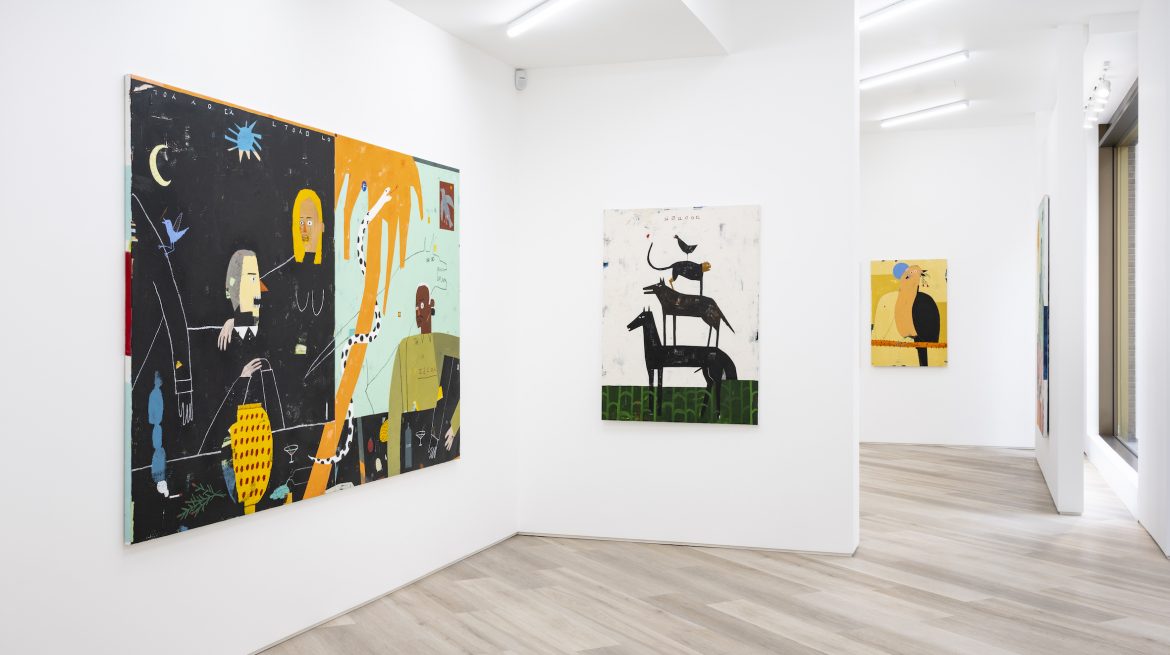
9 July - 7 August
BEERS London is thrilled to present the debut of South Korean painter, Hyangmok Baik in his first international solo exhibition. Since finding him on Instagram, the young artist’s profile has exploded – seeing him appear as an online favourite and securing shows in the USA and abroad. The naïve but honest approach paired with reductive colour schemes and complex compositions has found him a loyal collector base with both peers and critics singing his praises.
Hyangmok’s work continues in a tradition of bold, somewhat crude, almost post-aesthetic contemporary painting. His work combines a flattened perspective; a raw, heavily-worked surface; unpredictable colour-schemes; and irreverent subject matter – from disembodied heads to ducks to platters of fruit or bottles of champagne – the paintings seem somehow atemporal, acultural, ahistorical, and, paradoxically, universally relatable. Hailing from South Korea, Hyangmok is into surfing and weightlifting, but also keen on dream-analysis and the subtle unspoken intricacies of human interaction. Through recontextualization, the nonsequitur, deconstruction, and a fair amount of dark humour, Hyangmok’s paintings would seem just as relevant in California just as soon as they seem to articulate the kind of laissezfaire, post-punk lifestyle of a South Korean millennial.
The manner in which he speaks about his work would not seem out of place, in, say, a Haruki Murakami novel:
It seems cloudy and gray, like a dream, but it’s expressed very clearly. All the elements in my work are arranged through my imagination into a single story. In the very middle of it, A person: he or she or it, is myself or a portrait of a modern person at the same time. A character. Sometimes we can remember the characters in our dreams, but mostly, we can’t. I try to express the stories that no one can remember but me, as dreams i’ve never experienced, and as uncannily familiar moments someone has maybe experienced before, in the past.
Through his usage of familiar, if uncanny referents, the work offers a fresh perspective to the conversation of painting. Through a diverse visual arsenal of motifs, symbols, and stylistic tendencies, the paintings are elevated to a new kind of complex, albeit reductive, semiotic language. The paintings seem to connect through a sort of visual connectivity apart from language – where the visual has been disassociated from meaning and reduced to a series of images, colours, shapes, and symbols that may (or may not) have a real-life reference and are left for the viewer to impart further meaning.
51 Little Britain, London, UK, EC1A 7BH